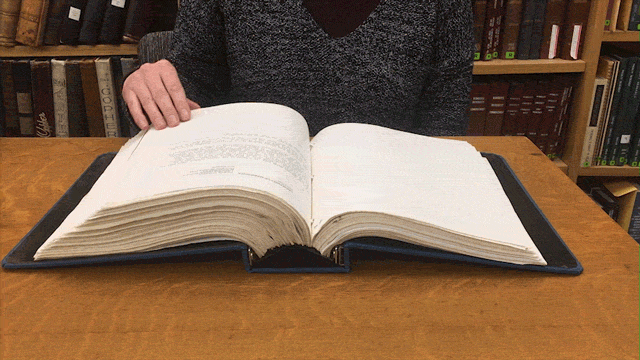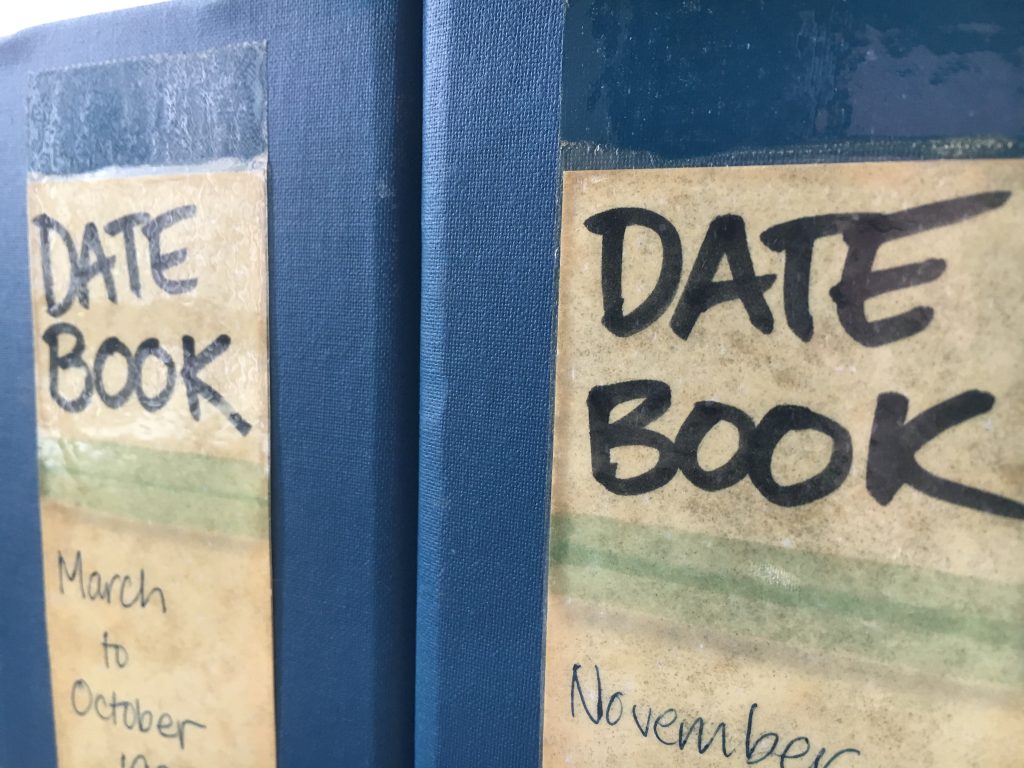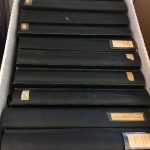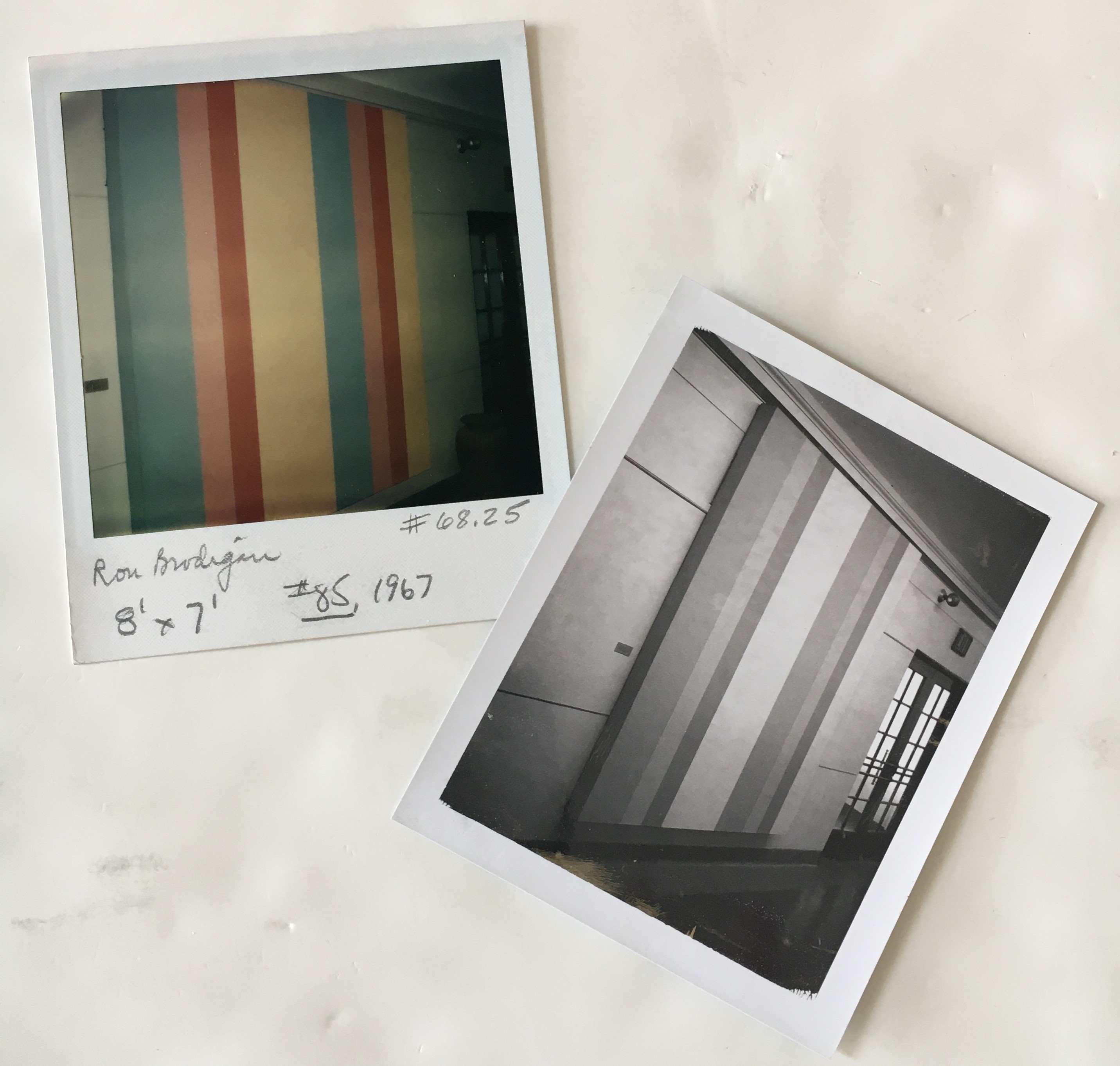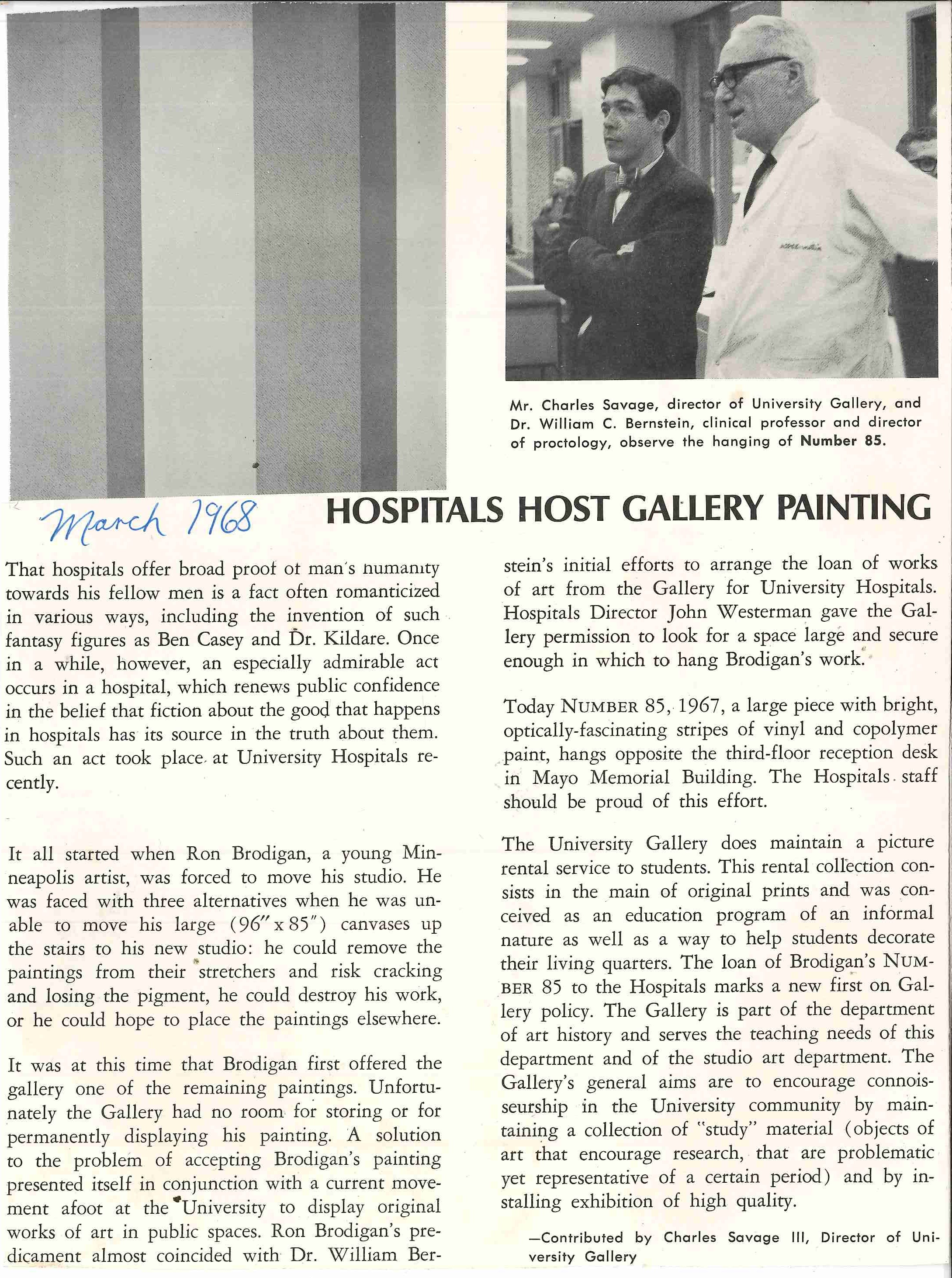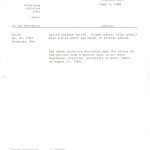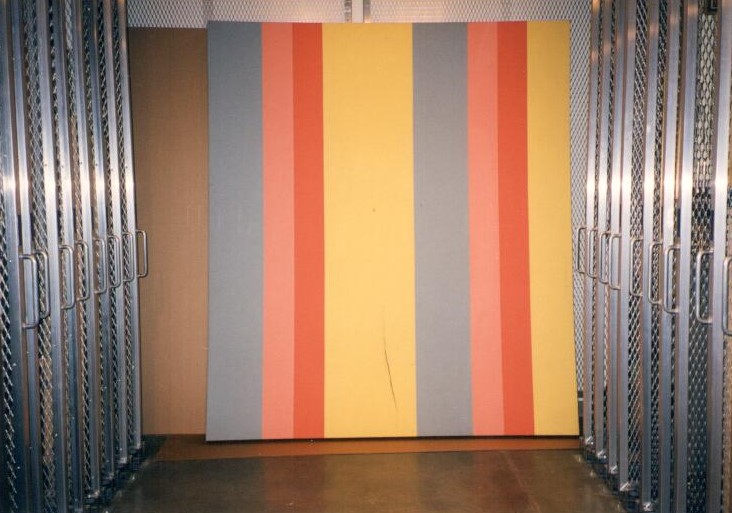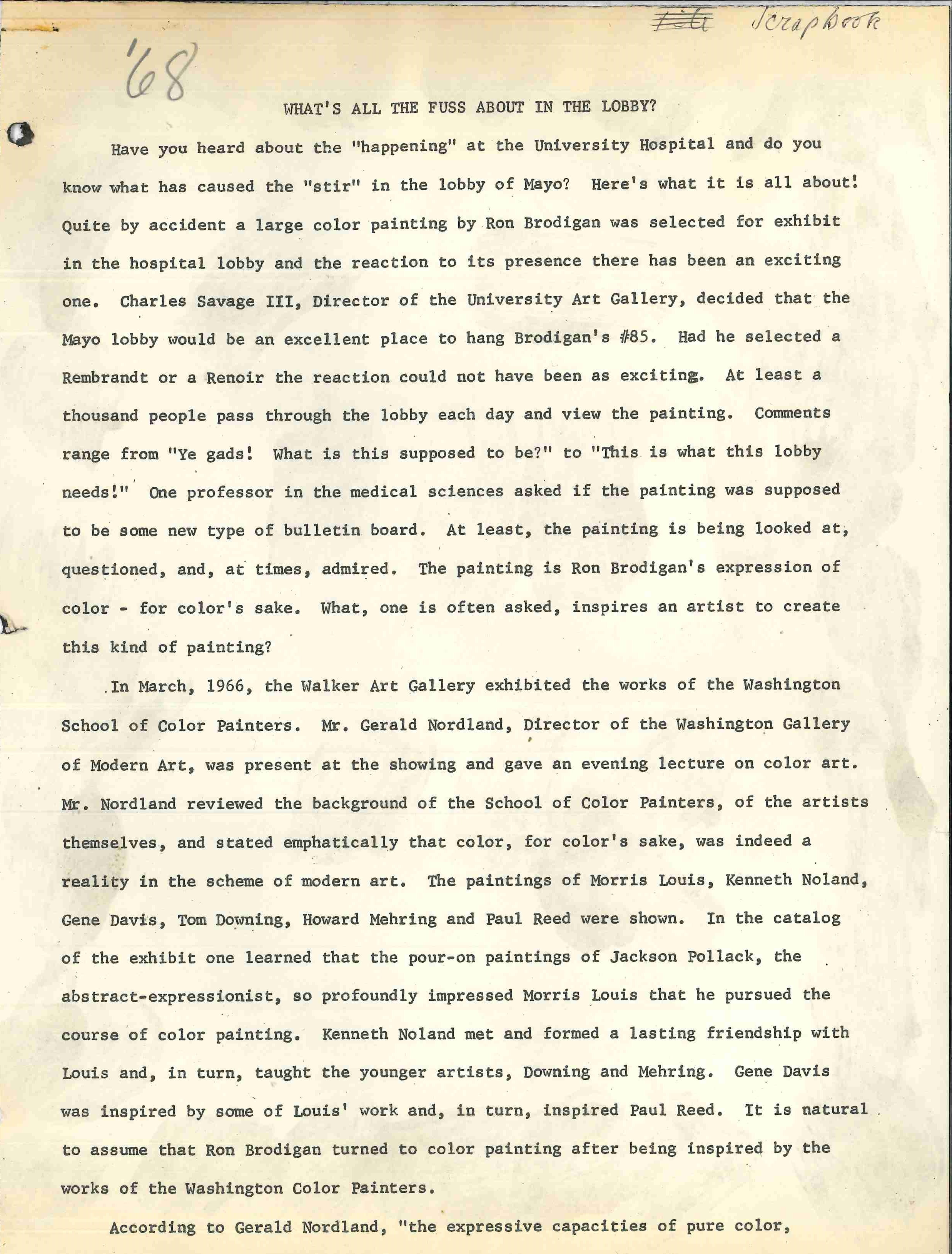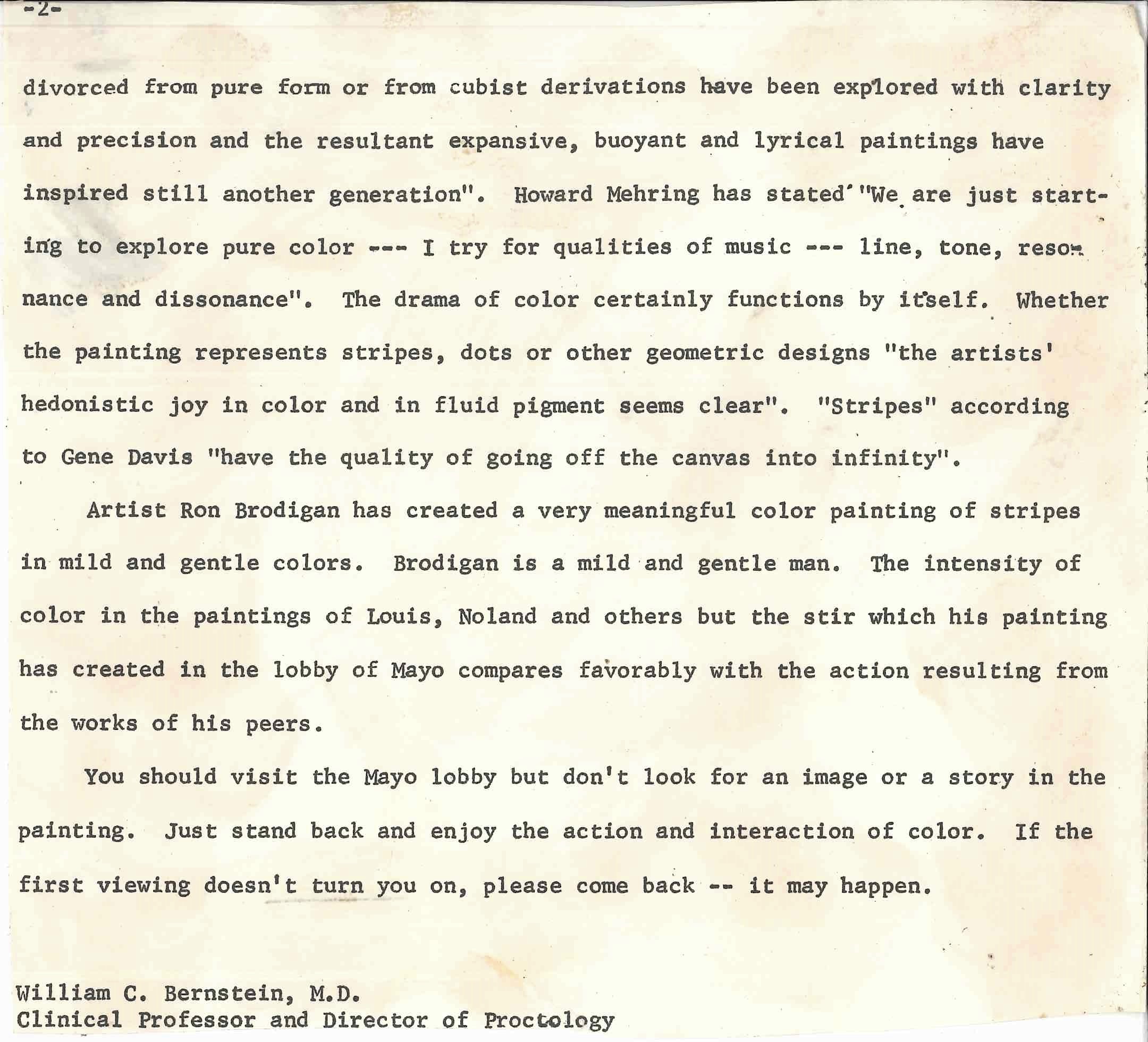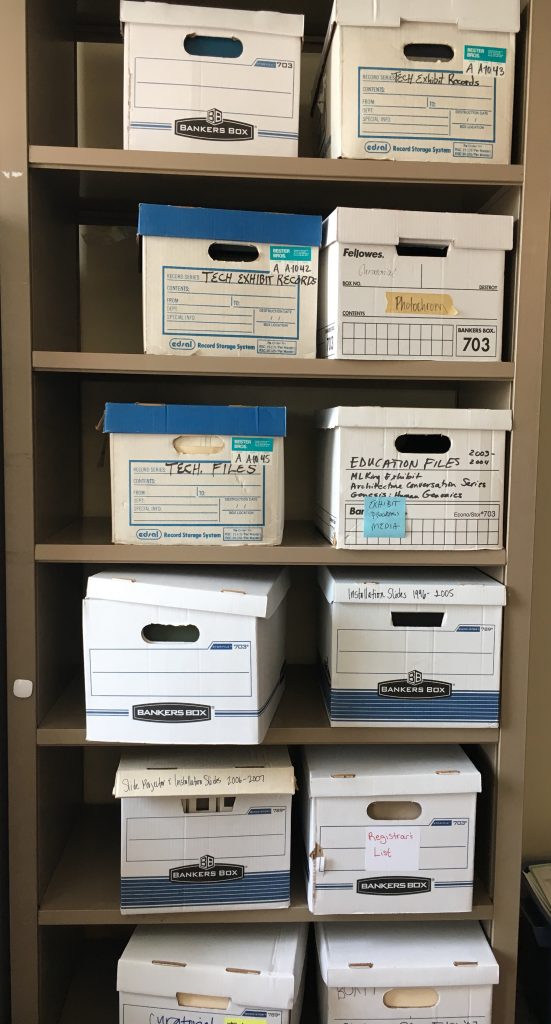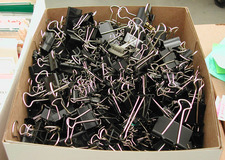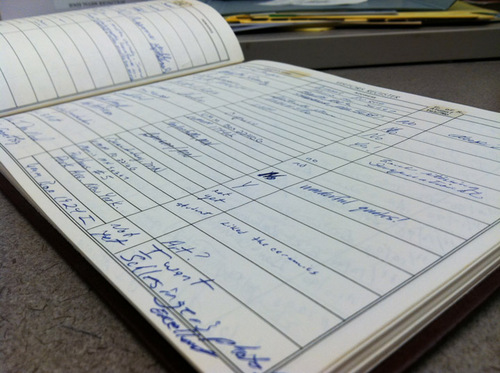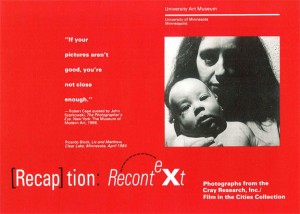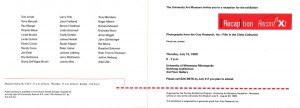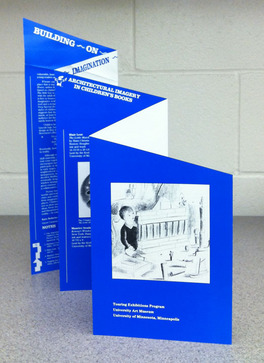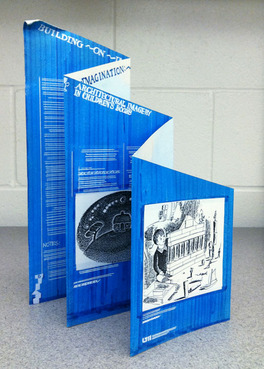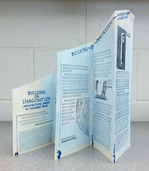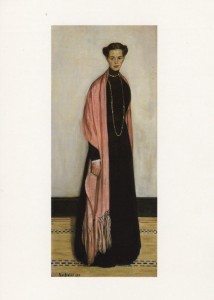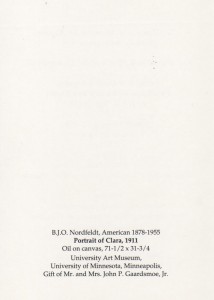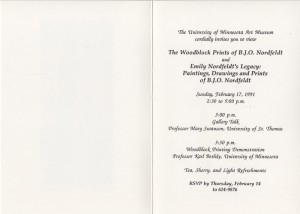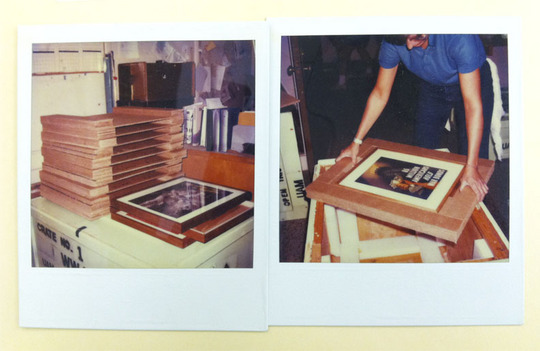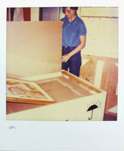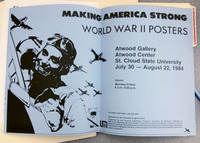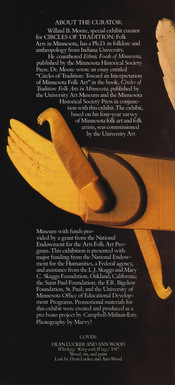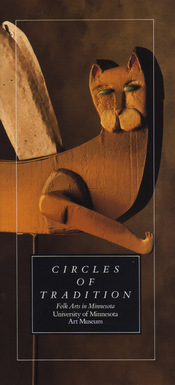In a report compiled by long-time gallery director Ruth Lawrence to reflect upon the 25th anniversary of the Little Gallery in 1959, a section titled, “The First Curator,” described Hudson D. Walker’s background and his brief, though instrumental, role in the foundation of the Weisman Art Museum as The Little Gallery in 1934:
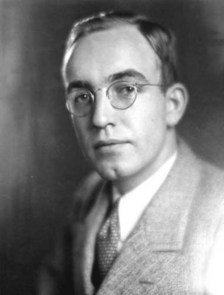
“The University was most fortunate in obtaining Hudson Walker, who in March, 1934, was appointed the Gallery’s first curator of art. Mr. Walker was experienced in Gallery operations and management. He was the grandson of Mr. T. B. Walker, founder of the Walker Art Gallery. Hudson Walker was no novice in the functioning of a museum. He had been trained at the Fogg Museum, Harvard University, for work such as this. He knew the practical side, the importance of shipping and care of works of art worth thousands of dollars. He was especially aware of the responsibility of borrowed works. He had developed a small gallery of his own in Minneapolis, dealing in such works as watercolors, woodcuts, etchings, etc.”
Walker was officially appointed to the title of “Curator of Art” at the University in March of 1934, and departed at the end of his appointment in June in order to pursue the establishment of a gallery in New York City. However, his role with the University of Minnesota and the Little Gallery did not conclude with the end of his employment. Walker’s relationship would inspire additional titles in relation to his contributions to the University and to the museum.
Lawrence’s description of the First Curator only briefly touches upon the work done by Walker in those few months he was employed at the U of M. For the very first exhibit that was held at the gallery, he arranged for the loan of 18th and 19th century paintings from regional art museums, and covered the expense to insure the works out of his own pocket. At his departure, Walker imparted some advice to university administration that would shape the formation of the gallery in its formative years. He emphasized to Assistant to the President Malcolm Willey that “There should be some anchorage provided in the way of a permanent collection to insure a permanency of interest” and added that the gallery should emphasize a “workshop character” as opposed to the “traditional notion of a museum as a place for safekeeping of rare objects.”
In 1950, Walker placed works from his private collection on loan to the University of Minnesota. The loan included many pieces by the artists Alfred Maurer and Marsden Hartley. He, along with his wife Ione, also made many generous gifts of artwork and additional donations to the gallery in the following years.
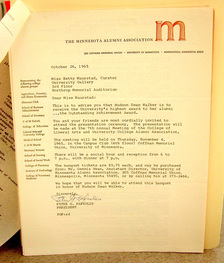 In 1965, Walker became an award winner and honoree when he received the Outstanding Achievement Award from the Minnesota Alumni Association. A letter (at left, click for a pop-up to read) from the President of the Minnesota Alumni Association addressed to Gallery curator Betty Maurstad, extended a formal invitation to the ceremony that was held to present Walker with the award.
In 1965, Walker became an award winner and honoree when he received the Outstanding Achievement Award from the Minnesota Alumni Association. A letter (at left, click for a pop-up to read) from the President of the Minnesota Alumni Association addressed to Gallery curator Betty Maurstad, extended a formal invitation to the ceremony that was held to present Walker with the award.
In conjunction with Walker’s receipt of this award, an exhibit titled One Hundred Paintings Drawings and Prints from the Ione and Hudson D. Walker Collection was held from November 4-December 19, 1965 at the University Gallery. A dedication by University of Minnesota President O. Meredith Wilson, printed within the catalogue that was prepared for the exhibition stated, “The collection of Mr. and Mrs. Walker is an important resource in furthering the University of Minnesota objectives of teaching, research and service and has aided immeasurably the University’s development of significant programs in the visual arts.”
Exhibition catalogue, One Hundred Paintings Drawings and Prints from the Ione and Hudson D. Walker Collection:
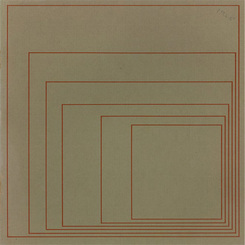
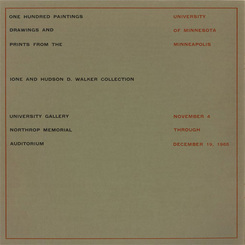
Polaroid photographs taken at the exhibit opening show Walker amongst other attendees in the hallways and stairwell that lead to the gallery in Northrop Auditorium:
(click on the image for a larger version)
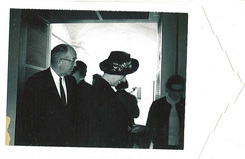
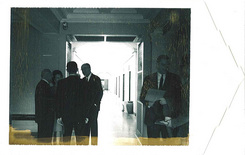
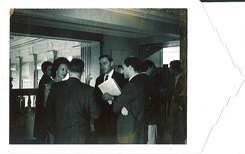
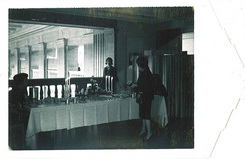
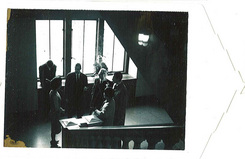
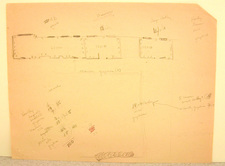 A drawing of a proposed gallery layout for the exhibit was found in the exhibition file in Box 11 of WAM’s archived administration records. From the drawing, (at left, click for pop-up to review) one can assume that the exhibit was split into sections-one section of 22 miscellaneous works from Walker’s collection, another section that contained 12 works by the artists Alfred Maurer, another room dedicated to 14 large Marsden Hartley paintings, and a final section of Alfred Maurer graphic works, that appear to have been placed in the hallway that lead to the gallery.
A drawing of a proposed gallery layout for the exhibit was found in the exhibition file in Box 11 of WAM’s archived administration records. From the drawing, (at left, click for pop-up to review) one can assume that the exhibit was split into sections-one section of 22 miscellaneous works from Walker’s collection, another section that contained 12 works by the artists Alfred Maurer, another room dedicated to 14 large Marsden Hartley paintings, and a final section of Alfred Maurer graphic works, that appear to have been placed in the hallway that lead to the gallery.
More polaroids were found in the exhibition folder that show the works displayed in the gallery space:
Alfred Maurer, “Portrait of a Girl with Gray Background,” 1930, oil on composition board
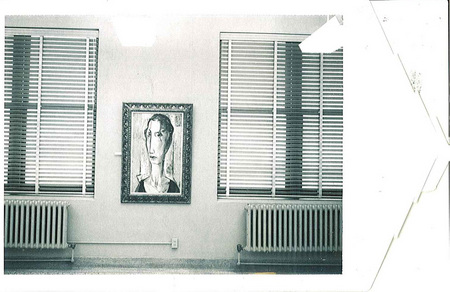
(1) Alfred Maurer, “Two Heads,” 1930, oil on composition board
(2) Alfred Maurer, “Two Figures of Girls,” 1926, oil on composition board
(3) Alfred Maurer, “Still Life with Cup,” 1929, oil on composition board
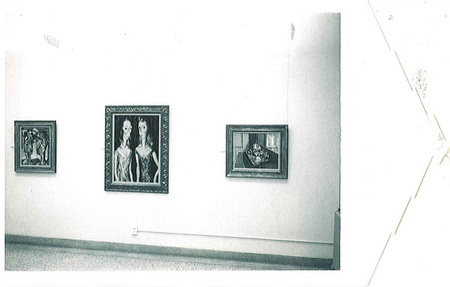
Artworks by Marsden Hartley, as displayed in the exhibit:
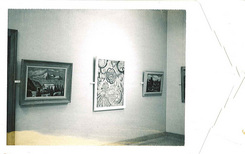
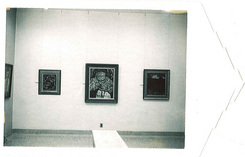
An additional item found alongside the polaroids in the exhibition folder is a note from Walker to President Wilson that expressed Walker’s appreciation for the acknowledgement he received from the University:
(click on image for larger pop-up version)
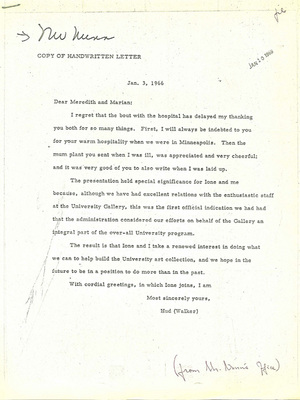
Two additional titles were given to Walker on the occasion of a 1977 memorial exhibition titled, Hudson D. Walker: Patron and Friend. The exhibition commemorated Walker and the bequest of his collection to the museum.
Regardless of how one refers to Hudson Walker when recalling the history of the museum – first curator, patron, or friend – it is clear that no appellation can truly capture all of the contributions that he has made to its legacy.
